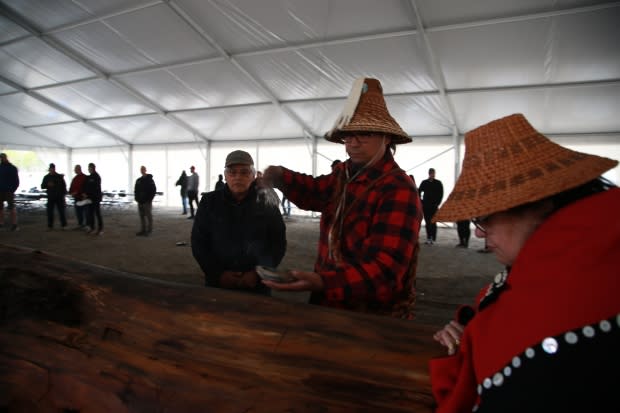'The healing journey begins' as work starts on traditional dugout canoe in Carcross
There have been turbulent times for the Carcross/Tagish First Nation over the years, from the arrival of Gold Rush settlers, to the establishment of mission schools, to more recent changes in the First Nation's leadership.
But now it's hoped that a 450-year-old red cedar log can heal the community and help it move forward.
The log is being carved into a dugout canoe, and the process of transforming the log is meant to bring the community together.
"The healing journey begins as soon as the carving starts," said Wayne Price, a Tlingit master carver from Haines, Alaska. He's now in Carcross teaching people there the art and tradition of carving a seaworthy canoe from red cedar.
"A new chapter is being written now, a new page is being turned, culture is being brought back."
Price was warmly welcomed last week to the traditional territory of Carcross/Tagish First Nation. Community members gathered inside a large tent and formed a circle to have a prayer and smudge.
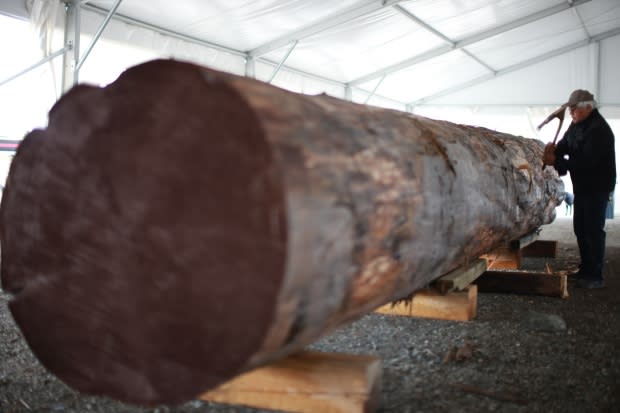
The faint smell of cedar and the sound of a gentle rain could be heard inside the white tent, creating the feeling of standing in the temperate rainforest where the cedar grew. The tree is about 450 years old, meaning it roughly dates to the time First Nations started seeing European settlers arrive in Canada.
"You know, it takes 450 years to make a dugout — and that's part of my story we want to keep," said Price.
The large white tent is set up next to the Carcross/Tagish First Nation Learning Centre. The log inside is massive — 9.1 metres long, with a 1.37-metre diameter. Soon, the ground will be covered with wood chips as the carving work begins.
The First Nation received $100,000 for the project, from the Canada Council for the Arts.
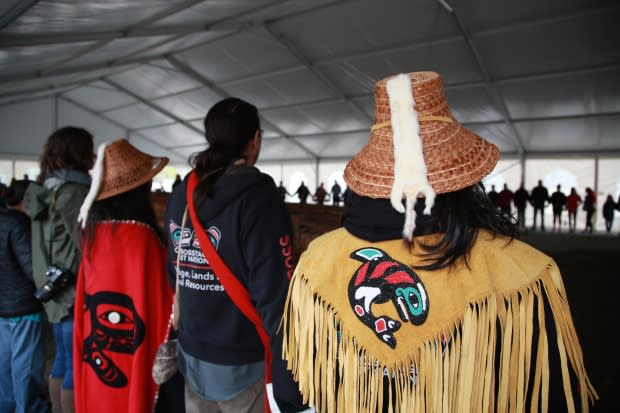
Price will work on it for the next two months, with help from community members. The goal is to have it done in time for the community's Haa KusteeY'e Celebration at the end of July. The three-day event brings communities from Alaska, B.C., and Yukon together to celebrate Inland Tlingit culture.
An ancient art
Building a dugout canoe is an ancient art. Skills have been passed down through generations.
They're one of the oldest styles of boats in North America. Some date back thousands of years, and were used for seasonal travel, hunting, and fishing.
The dugout in Carcross is the 12th vessel Price has built in the traditional way, using mostly hand tools. Price uses a tool called an adze to shape the log, and eventually hollow it out.
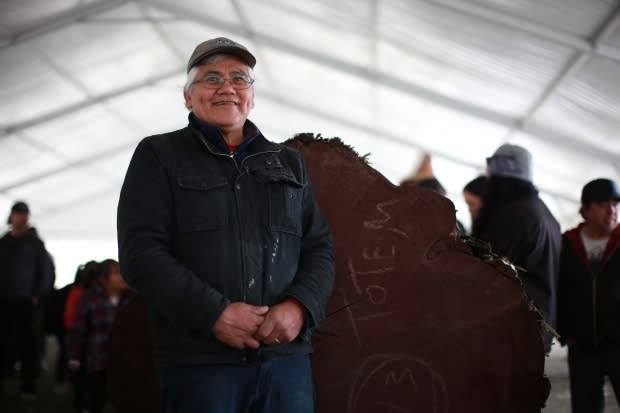
Price says as it's carved, each chip that comes off the log represents some of the struggles First Nations have lived through.
"I had a vision in the sweat lodge. It told me to make a healing dugout [canoe], and I asked, 'how do you make a healing dugout?'" Price recalled.
"We are bringing our culture back" - Keith Wolfe Smarch, Tlingit master carver
"And the Creator said, 'each chip represents a life that has been affected by mind-changers in our culture, and of all the chips that come out of the dugout, there wouldn't be enough chips."
Sean Ltaguháa, a member of the Carcross/Tagish First Nation, says a project like this will provide a lot of healing for his community.
"That's where people are really wanting to move forward to do our healing as a community, to hold each other up, and to learn more about our ancestral ways, and to learn more about our culture," said Ltaguháa.
Carcross youth Scottie James wants to be involved in the carving, and learn from Price.
"In my family, we have always tried to go to these things, we always try to be a part of our culture as much as we can and try to stick with it ... I want to learn more about my culture," said James.
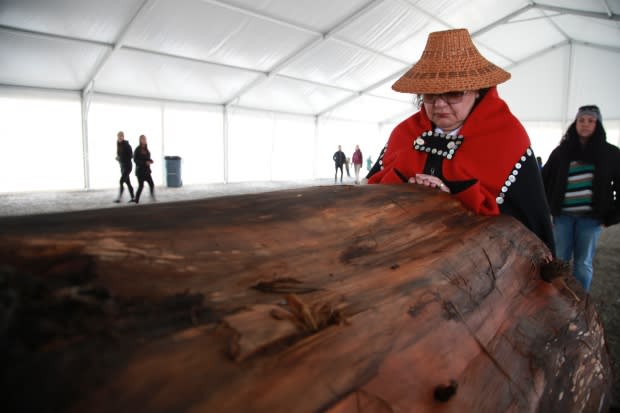
Keith Wolfe Smarch, a Tlingit master carver from Carcross/Tagish, says the dugout is part of the early culture of his people.
"We keep talking about bringing back the culture, and we know for a fact that 70 miles down the lake here at Ben-My-Chree there is a petroglyph up in the mountain ... of a canoe with a sail on it, and people on it. And that was found around the turn of the century, so obviously they were here before," said Wolfe Smarch.
"So again, we are bringing our culture back."
Price can't wait to build his new boat for the community and see the members of the Carcross/Tagish First Nation paddle it on the ocean.
"I would love to see that. I have my own personal dugout — it's a 28-footer, it's got about 600 nautical miles of the journey on it, and hoo-haa!" Price said.
Price says paddlers from Carcross could join him in Haines next year and paddle their new vessel to Juneau, Alaska for the bi-annual Tlingit Celebration.
